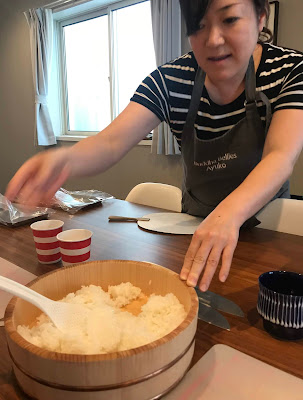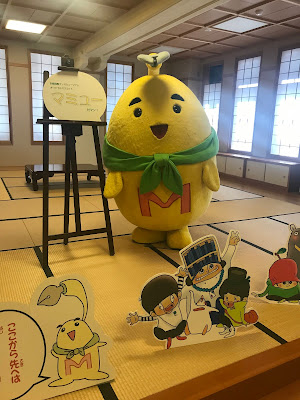Mongolian Wanderings
 We got to the Gandantegchinlen Kiid just before dusk. We were given the tip “In Mongolia, every car is a taxi” and waving at a passing car proves it. The monastery itself feels vital after
We got to the Gandantegchinlen Kiid just before dusk. We were given the tip “In Mongolia, every car is a taxi” and waving at a passing car proves it. The monastery itself feels vital after 
We saw several poles with blue cloth tied around them as we drove in. Our driver, Ogott, proves to be a man of few words but many beeps. As we pass his preferred shrine, we don’t have time to stop so he blasts the horn three times in tribute.
After the temple we stop for lunch in a ger (yurt-like felt tent). I was concerned it would be a co-ordinated touristy thing complete with hokey displays of ‘traditional dancing’, but we seem to
 randomly stop at the nearest ger. The dome structure is designed to shed snow and keep the heat in, while being mobile enough for nomads. In winter there’s a little antechamber by the door to keep the heat in. As we come in we’re met with the mewling of newly born goats, soaking up the warmth. We are offered a milky tea though Tsegi warns us our stomach might not be able to take it. We have a few polite sips. It’s a little awkward with our hosts as we’re having a translated conversation back and forth. A neighbour arrives with a sticky newly born goat which he places by the fire and we all watch it struggle to stand. The neighbour wants to ask us about sheep. We work out this is because we’re Australian and hence must know all about sheep, in the same way Brits know all about growing tea and Americans can detail the ins and outs of their foreign policy.
randomly stop at the nearest ger. The dome structure is designed to shed snow and keep the heat in, while being mobile enough for nomads. In winter there’s a little antechamber by the door to keep the heat in. As we come in we’re met with the mewling of newly born goats, soaking up the warmth. We are offered a milky tea though Tsegi warns us our stomach might not be able to take it. We have a few polite sips. It’s a little awkward with our hosts as we’re having a translated conversation back and forth. A neighbour arrives with a sticky newly born goat which he places by the fire and we all watch it struggle to stand. The neighbour wants to ask us about sheep. We work out this is because we’re Australian and hence must know all about sheep, in the same way Brits know all about growing tea and Americans can detail the ins and outs of their foreign policy. 
I sneak in a toilet break and notice that the outhouse uses cow dung as a glue to hold the wooden structure together. Back inside dung is burnt in the fire and it has dried so much there’s no smell. Our tea was prepared on this fire and there was no noticeable stink. The whole ger is cosy and natural with not a traditional dancer in sight.
We head back to Ulaan Bataar with another train to catch. We encourage Otgoo to break the drive at his shrine and honour it by doing a three circumnavigations. We solemnly pick up three stones, dropping one on each lap and making a little prayer that we’ll get to the train on time. Otgoo makes a single lap, tossing all three stones in one go. We ask Tsegi why. “He is lazy,” she laughs. But as we pull out we see some lazier worshippers, who do a quick lap in their car. Nirvana has developed dive-thru.
Beard weird: Walking up to the monastery I get my first beard freeze. It starts with a moistness that hardens as I scrape your hand across it. It’s best prevented with a scarf or shaking off the icicles as you go.
Ethnic headgear count: Disappointingly two (an Uyghur man at the station and tourist shop)




Comments
Post a Comment